Lawn Weed Identification and Control
Purslane is a summer annual weed that can be found in lawns, gardens and landscape beds throughout the United States. A vigorous grower in moist, warm, well-fertilized soils, and very persistent in areas that are damp most of the time.
Characteristics:
- Summer annual
- Prostrate growth habit
- Fleshy stems and leaves
- Reddish stems
- Leaves are alternate on stems
- Yellow flowers
- Numerous black tiny seeds
It is edible, with a sweet and sour taste that can be described as ‘lemony spinach’. Many savvy gardeners include this herb in their edible landscapes, adding it to salads raw or cooking in soups or other dishes.
Because of its succulent nature, it is able to tolerate poor, compacted soils and drought
Purslane Weed Control

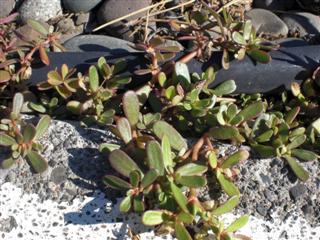
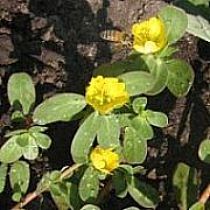
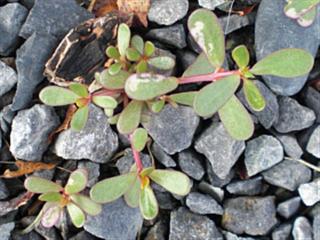
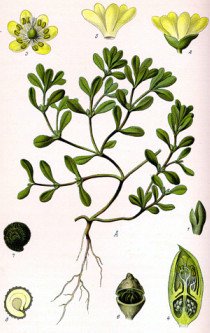
Life Cycle – summer annual (warm-season weed) that reproduces by seed. Its life cycle starts in the spring with seed germination when soil temperatures reach 60° F. Flowers are produced quickly, within two to three weeks and it continues to bloom throughout the summer and into fall. Cool temperatures and a hard frost will kill it in the fall.
According to the University of California’s IPM website, Common Purslane is a prolific seeder. A single plant may produce 240,000 seeds, which may germinate even after 5 to 40 years.
Being a heavy seeder gives it the ability to colonize any warm, moist site that will form a dense carpet quickly.
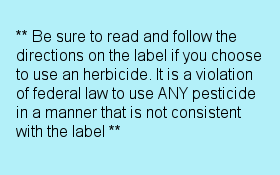
Chemical control – pre-emergent herbicides – commonly called ‘crabgrass preventers’ – can be applied in the spring before weed seeds germinate to keep them from sprouting. There are several post-emergent broadleaf herbicides that are effective and these work best on young, small weeds.
Landscape beds can be spot sprayed with glyphosate (Roundup), a non-selective post-emergent weed spray. Avoid damage to non-target plants from over-spray or drift.
Hand Weeding – When pulling or digging, be sure to remove all parts of the plant. Pieces of the stem and taproot remain viable for several days and have the ability to generate new plants.
Weed ID
Leaves – The leaves are thick and fleshy. They grow opposite along the stems, are 1/4 to 1 1/4 inches long, rounded at tip and narrow at the base.
Stems – Fleshy, branching, purple to red stems that spread along the ground.
Flowers – Yellow flowers with five petals. 5 to 10 mm wide.
Roots – Forms a taproot with fibrous lateral roots.
You might like these
Corn Speedwell | Veronica arvensis | Lawn Weed Identification
Corn Speedwell (Veronica arvensis) is a low-growing winter annual and a common weed problem in thin turf stands and newly seeded lawns. Pictures to help with lawn weed identification and control.
Mouse-Ear Chickweed | Lawn Weed ID & Control
Mouse-ear chickweed is a common lawn weed found throughout the United States. Its characteristics make it a competitive weed in lawns.
Common Chickweed | Lawn Weed Identification and Control
How to identify and manage Common Chickweed (Stellaria media), a winter annual lawn weed. Photos are included to help with weed id and control. Lawn care tips and advice.
